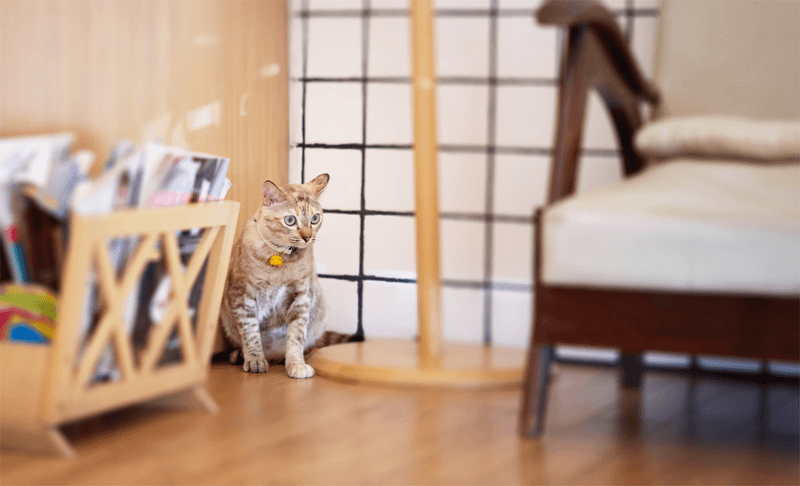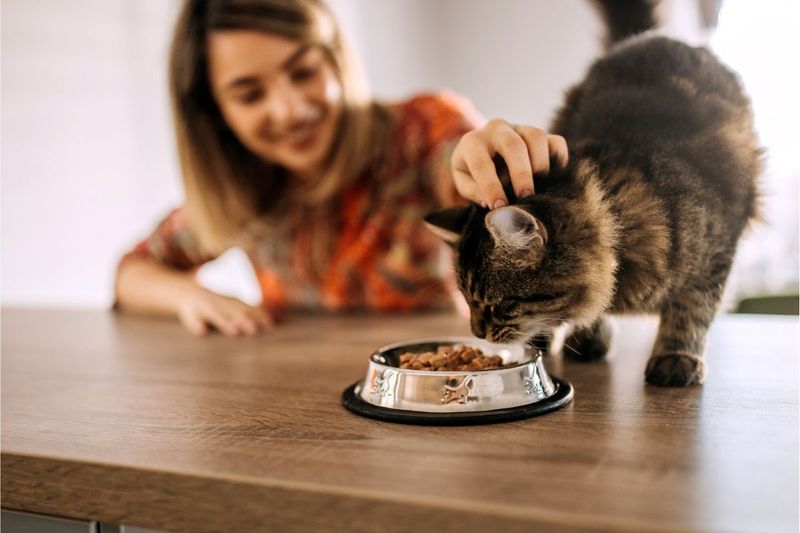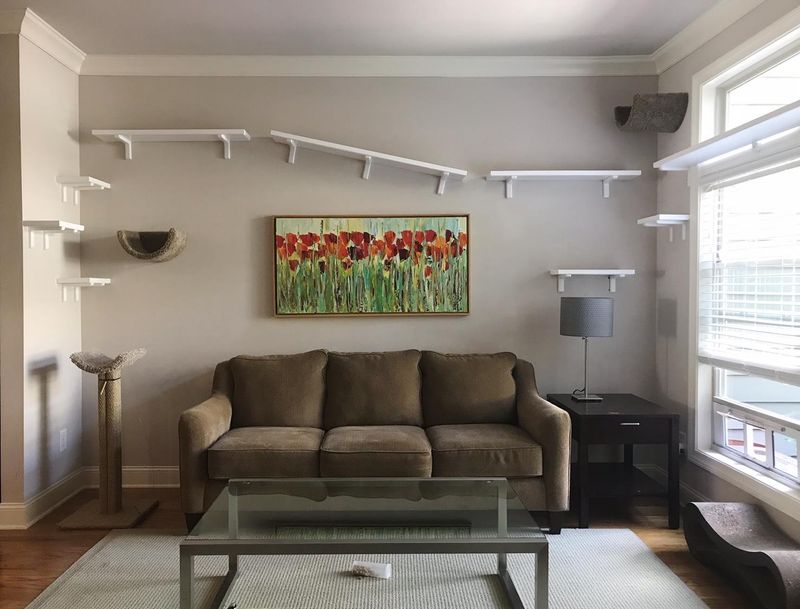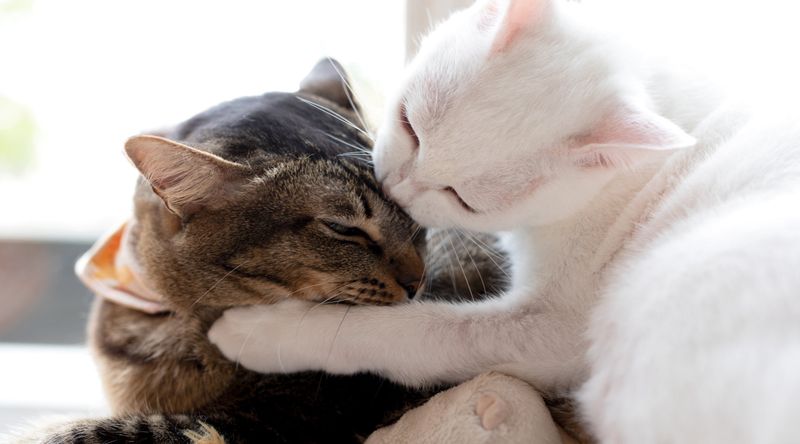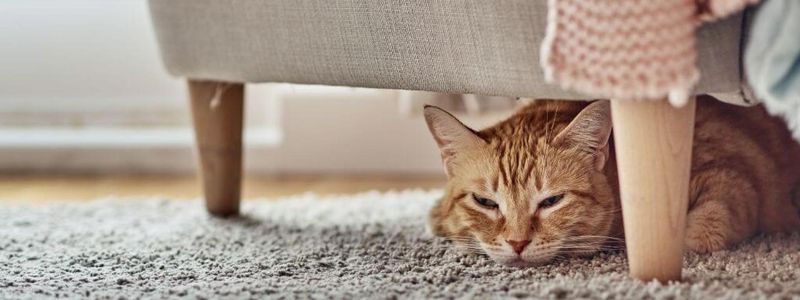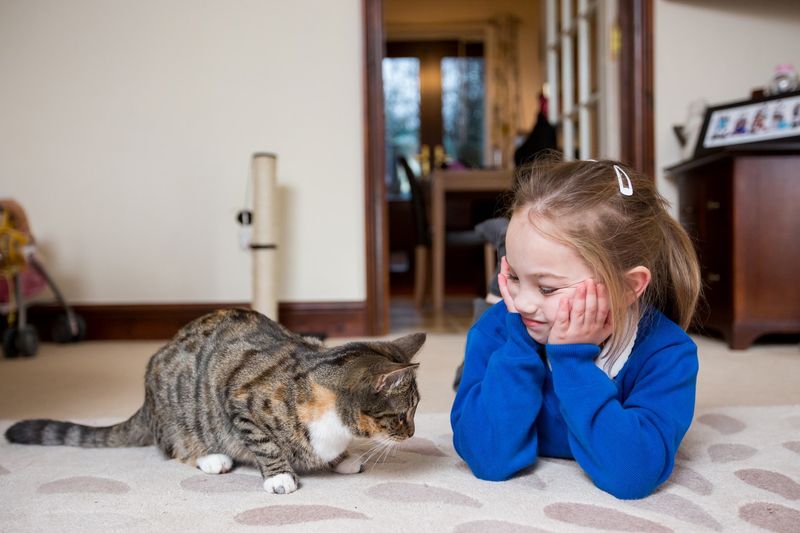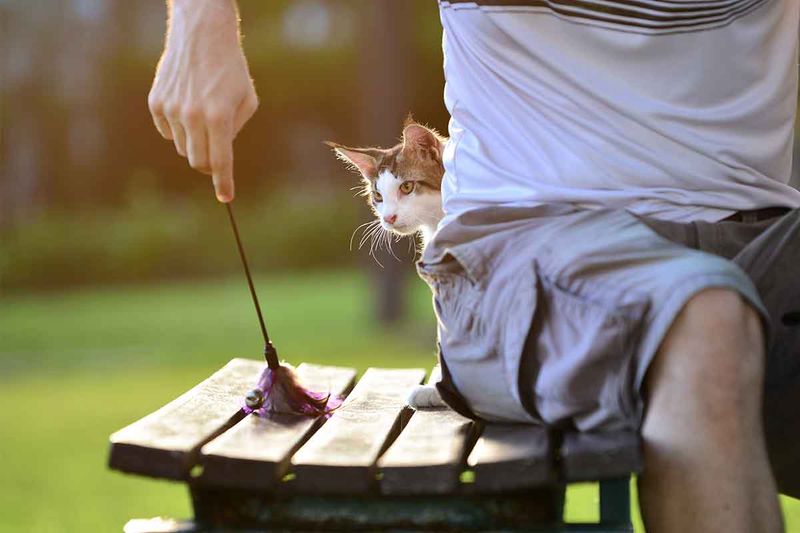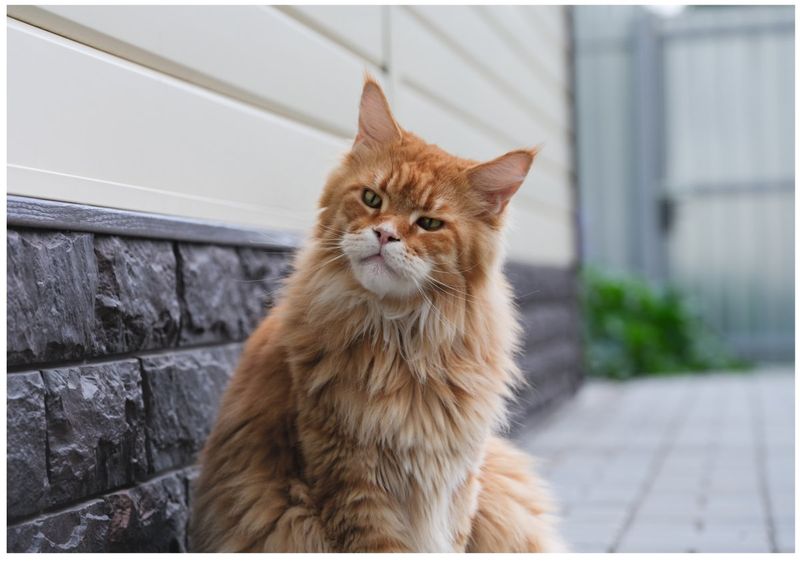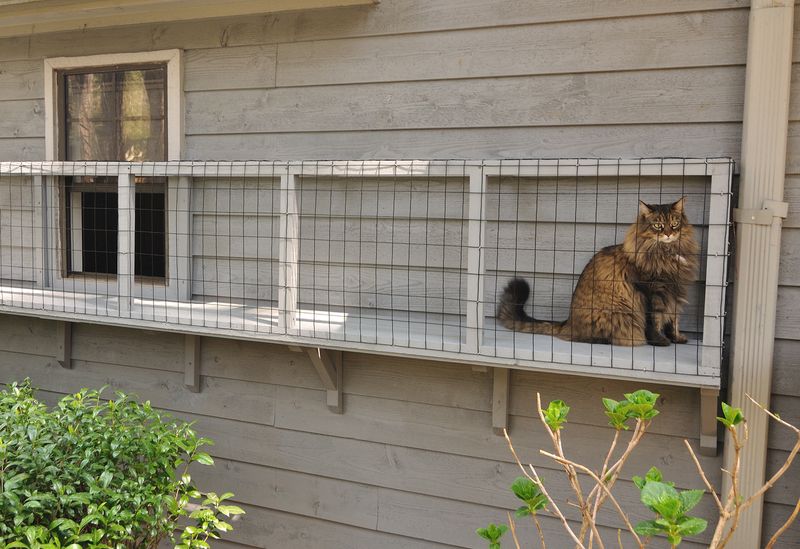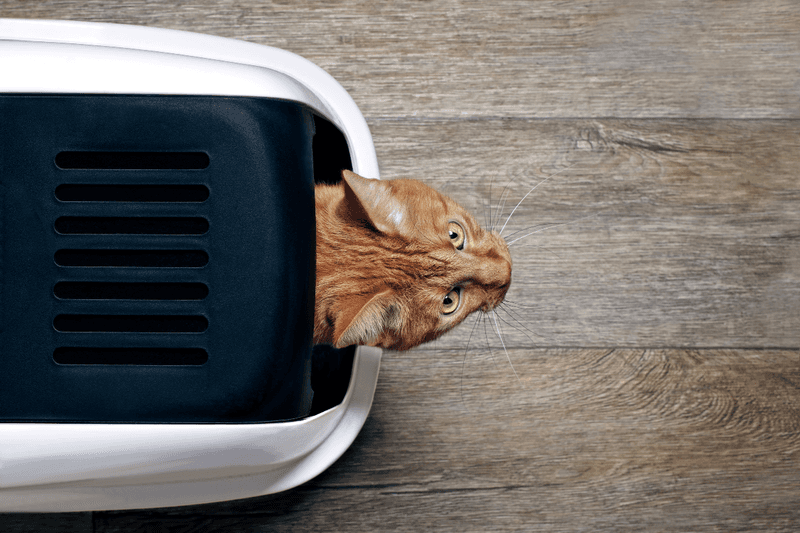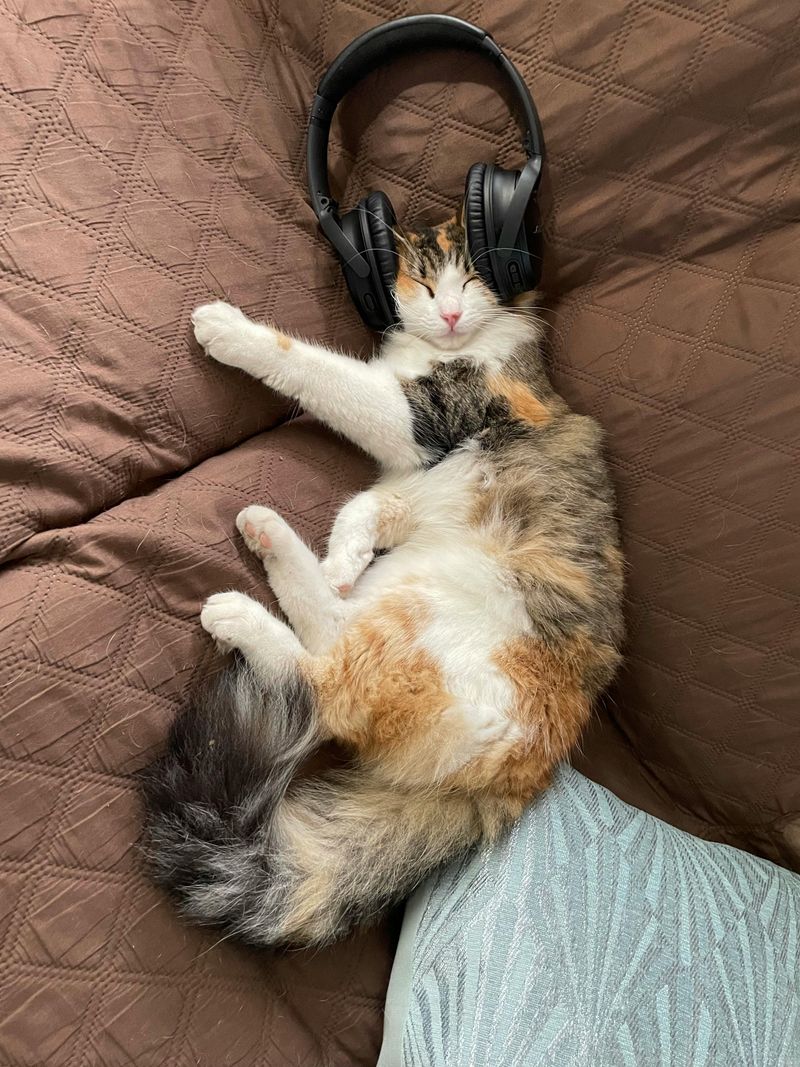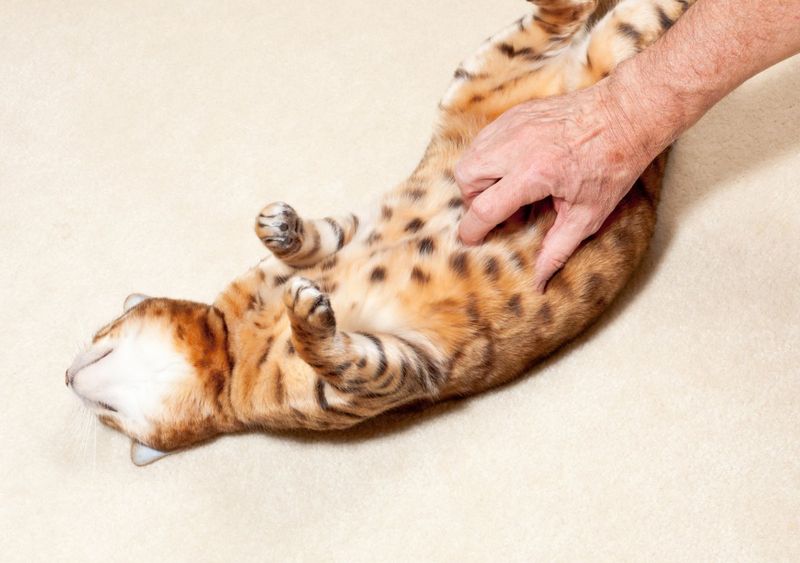📖 Table of Content:
- 1. Create a Safe Space
- 2. Establish a Routine
- 3. Provide Vertical Spaces
- 4. Use Pheromone Diffusers
- 5. Offer Plenty of Hiding Spots
- 6. Ensure a Calm Feeding Area
- 7. Encourage Positive Interactions
- 8. Provide Mental Stimulation
- 9. Reduce Loud Noises
- 10. Respect Their Alone Time
- 11. Offer Safe Outdoor Access
- 12. Ensure a Clean Litter Box
- 13. Introduce Soothing Sounds
- 14. Give Them Affection on Their Terms
- 15. Be Patient and Observant
In a busy household filled with constant movement, conversations, and unpredictable noises, it’s easy for a feline to feel overwhelmed. Unlike humans, who can rationalize a chaotic environment, cats rely on consistency and comfort to feel safe. Without these, they may develop stress-related behaviors like hiding, excessive grooming, or even aggression. Understanding how to foster emotional security for your cat in a lively home is crucial for their well-being and overall happiness.
Creating a cat-friendly environment doesn’t mean changing your entire household dynamic but rather making small, intentional adjustments that cater to your cat’s instincts. Recognizing their communication cues and respecting their boundaries further strengthens their trust in you. Just as people need a quiet retreat after a long day, cats also benefit from designated areas where they can relax without disturbance. By incorporating thoughtful strategies, you can ensure your cat remains comfortable and confident, no matter how energetic your home may be.
This guide will explore 15 essential ways to help your cat feel emotionally safe in a full household, from setting up quiet spaces to using soothing sounds and maintaining a predictable routine. Whether you have a large family, multiple pets, or frequent guests, these strategies will help you create a balanced environment where your cat can thrive.
1. Create a Safe Space
Establishing a dedicated safe zone for your cat is essential in a bustling household. Whether it’s a quiet room, a cozy nook, or a covered bed, having a retreat gives your feline a sense of security. Cats instinctively seek out hiding spots when they feel overwhelmed, so providing one prevents unnecessary stress. Soft blankets, a cat tree, and a few favorite toys can make the space more inviting. Ensure that this area remains undisturbed, especially during noisy family gatherings or household commotion. If possible, place it in an elevated location since cats often feel safer when they can observe from above. Over time, your cat will associate this space with comfort and return to it whenever they need to decompress.
2. Establish a Routine
Predictability is key when it comes to feline comfort. Cats feel most secure when they know what to expect, making a consistent daily schedule crucial. Feeding them at the same times each day, along with regular play sessions and litter box maintenance, helps reduce anxiety. Unpredictable changes in their environment can cause distress, leading to behavioral issues such as excessive meowing or hiding. Even small routines, like greeting your cat at the door or providing evening cuddle time, reinforce stability. Sticking to a schedule also strengthens your bond, as your cat will associate you with reliability and comfort. In a lively home, a structured routine serves as an anchor, making everything feel a little less chaotic for your pet.
3. Provide Vertical Spaces
Height equals safety for many cats, especially in busy households filled with movement and noise. Installing cat shelves, placing perches near windows, or investing in a tall cat tree allows your feline to observe their surroundings from a secure vantage point. In multi-pet homes, higher spaces can also give your cat a way to avoid unwanted interactions. Climbing opportunities not only help with security but also encourage exercise, reducing boredom and anxiety. Window perches are particularly beneficial, offering entertainment through outdoor sights and sounds. If floor space is limited, wall-mounted options are an excellent alternative. By incorporating vertical elements, you create a more cat-friendly environment where they feel in control.
4. Use Pheromone Diffusers
Synthetic pheromones can work wonders in easing feline stress. Feliway and other similar diffusers mimic the natural pheromones cats release when they feel safe and comfortable. These products can be especially helpful during transitions, such as introducing new pets, moving to a new home, or dealing with household changes. Placing diffusers in high-traffic areas ensures a calming effect throughout the home. Unlike medications, pheromones are non-intrusive and provide a subtle yet effective sense of security. Cats that display signs of stress, like hiding excessively or marking territory, often benefit from this added support. Over time, using pheromones consistently can contribute to a more relaxed and emotionally stable feline.
5. Offer Plenty of Hiding Spots
Nothing comforts a cat more than having a reliable escape route. Cardboard boxes, enclosed beds, or access to quiet closets give your cat the privacy they sometimes crave. In a busy home, sudden movements and loud noises can be overwhelming, making secure hiding spaces essential. Rotating different hideouts throughout the house ensures your feline always has an option, no matter where they are. Some cats prefer darker, enclosed spots, while others feel safer behind furniture or under beds. Respect their chosen hideouts and avoid disturbing them when they retreat there. These safe zones provide emotional security, helping your cat regain confidence before rejoining the household.
6. Ensure a Calm Feeding Area
Mealtime should be a stress-free experience for your cat. Placing their food and water in a quiet, low-traffic location prevents them from feeling anxious while eating. If you have multiple pets, ensure each one has their own feeding station to avoid territorial disputes. A cat that feels rushed or threatened during meals may eat too quickly or avoid eating altogether. Keeping their bowls away from loud appliances, foot traffic, or sudden disruptions fosters a sense of peace. Some cats prefer elevated feeders or slightly secluded areas to feel more at ease. Providing a consistent, calm environment during feeding strengthens their emotional security.
7. Encourage Positive Interactions
Respecting your cat’s personal boundaries is essential for building trust. Every feline has unique social preferences, and understanding their comfort levels prevents unnecessary stress. If your cat enjoys petting, let them initiate contact rather than forcing affection. Teaching children and guests to approach calmly and read feline body language ensures more positive experiences. Rewarding your cat with treats or gentle words after good interactions reinforces trust. Avoid excessive handling, especially during moments of rest or hiding, to prevent creating negative associations. By fostering gentle and predictable interactions, you help your cat feel safer and more confident around household members.
8. Provide Mental Stimulation
A bored cat is often an anxious cat. Offering a variety of engaging toys, such as puzzle feeders, interactive wands, and catnip-infused plushies, keeps their mind occupied. Rotating different toys every few days prevents boredom and maintains interest. Interactive play sessions strengthen your bond and provide essential exercise. Scratching posts, treat-dispensing balls, and window perches with bird feeders outside add to their daily enrichment. If possible, consider teaching your cat simple tricks or using clicker training for extra mental stimulation. Keeping their environment engaging reduces stress and helps prevent destructive behaviors.
9. Reduce Loud Noises
Loud sounds can easily startle a cat, causing them to hide or feel anxious. Using white noise machines, soft background music, or calming nature sounds can help mask unpredictable household noises. If your home is particularly lively, designating a quiet room for your cat can be beneficial. During loud events, like parties or fireworks, closing doors and drawing curtains can further reduce noise disturbances. Cats have sensitive hearing, so sudden or sharp sounds can feel overwhelming. Speaking in a soothing tone and avoiding abrupt movements also helps maintain a peaceful atmosphere. Providing a calm, sound-controlled space reassures your feline that they are safe.
10. Respect Their Alone Time
Sometimes, your cat simply needs space. Recognizing when your feline wants solitude prevents unnecessary stress and helps them feel secure. If they walk away from a petting session or retreat to a hiding spot, respect their choice. Cats often seek alone time after overstimulation, new experiences, or changes in their surroundings. Giving them the freedom to come and go as they please fosters trust. When they’re ready, they’ll return for affection and social time on their own terms. Understanding their need for independence makes them feel safer and more in control of their environment.
11. Offer Safe Outdoor Access
Exploring the outdoors can be incredibly enriching for a cat when done safely. Catios, enclosed balconies, or supervised leash walks provide fresh air and new stimuli without the risks of roaming. Many indoor cats enjoy watching birds, smelling fresh grass, or basking in the sun from a secure space. Training a cat to walk on a leash requires patience, but once they’re comfortable, it can be a great bonding activity. If outdoor access isn’t an option, window perches with a view can be an excellent alternative. Even a screened-in porch or an open window with a secure mesh barrier can offer enrichment. Safely introducing outdoor elements enhances their emotional well-being without compromising their safety.
12. Ensure a Clean Litter Box
A dirty or poorly placed litter box can cause stress and avoidance behaviors in cats. Keeping it clean and odor-free encourages regular use and prevents accidents. Placing the litter box in a quiet, low-traffic area helps your cat feel secure while using it. If you have multiple cats, providing one litter box per cat (plus one extra) minimizes territorial disputes. Choosing the right type of litter that suits your cat’s preferences also plays a significant role in their comfort. Avoid sudden changes in litter type or location, as consistency is key. A well-maintained litter box contributes to a happier, more relaxed cat.
13. Introduce Soothing Sounds
Sound plays a significant role in shaping a cat’s emotional state. While sudden loud noises can trigger stress, soothing sounds can have the opposite effect, promoting relaxation and security. Gentle background noise, such as soft classical music, nature sounds, or white noise machines, helps mask disruptive household sounds like door slams or loud conversations. Studies suggest that certain frequencies, particularly those mimicking a mother cat’s purr, can have a calming effect on felines. During stressful events such as thunderstorms or fireworks, playing consistent, low-volume sounds can prevent anxiety-induced hiding or restlessness. Placing a soft, rhythmic sound near their favorite resting spot can enhance their sense of safety.
14. Give Them Affection on Their Terms
Understanding your cat’s unique personality is key to building trust and emotional security. Some cats enjoy cuddles, while others prefer sitting near you without physical touch. Instead of forcing interactions, allow them to seek affection when they’re comfortable. Pay attention to their body language—purring, slow blinking, or head bumps signal a desire for connection. Conversely, flattened ears, a twitching tail, or retreating indicate they need space. Respecting these boundaries strengthens your bond and prevents stress-related behaviors. By letting your cat set the pace, you create a sense of trust and emotional safety in your home.
15. Be Patient and Observant
Cats are sensitive creatures, and their emotional well-being can be influenced by even small changes in their environment. Observing their behavior closely helps you identify signs of stress, such as excessive hiding, grooming, or changes in appetite. If your cat seems anxious, take the time to adjust their surroundings and routine accordingly. Every feline has a unique personality, so what works for one may not work for another. Patience is key, as some cats take longer to feel secure in busy households. Providing reassurance through a calm presence and consistent care fosters long-term emotional stability. In the end, a little extra attention and understanding go a long way in helping your cat feel truly safe.

